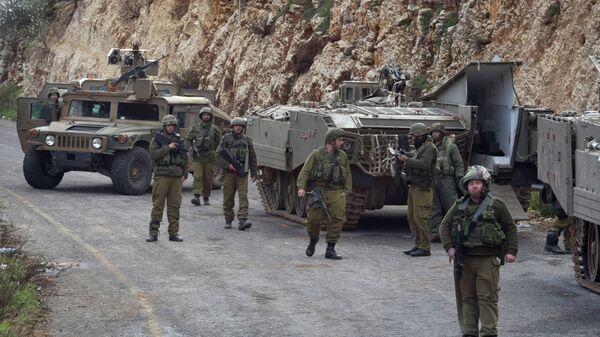It has been twenty years since Israel pulled its forces out of Lebanon, a cause for celebration for many in the Jewish state who rejoiced at the end of the 18-year conflict.
But for Julie Abou Araj, a Lebanese Christian, whose father was an officer with the South Lebanon Army (SLA) that fought alongside Israel against the Palestinian Liberation Organisation (PLO) as well as the Iranian-backed group Hezbollah in the 70s and 80s, Tel Aviv's withdrawal was the "end of the world".
"It was the most difficult day of my life", said Julie, who was 12 years old at the time of the withdrawal. "We only had a couple of hours to pack all our lives in several bags and make our way to the border, where we waited in line for hours until Israel finally allowed us in", she recalled.
No Other Choice
The threat was imminent. In May 2000, as the Israeli withdrawal rapidly progressed, vehicles with Hezbollah flags swarmed Julie's village, making her realise that if she and her family didn't pack up their destiny might be similar to that of her father, who had been murdered by the Shiite militia a year earlier.
"I remember listening to the speech of [Hezbollah chief] Hassan Nasrallah who gave SLA three options: to fight and die, surrender to the police forces, which also meant a sure death or flee with what he called a Zionist enemy. We chose the latter option".
But they were not alone. Fearing persecution, torture, and death, some 7,500 SLA militiamen and their families made their way to the fence that separated Israel from Lebanon, pleading with Tel Aviv to let them in.
Israel, who was only prepared to take in 600 individuals, had no choice but to open its doors for all those seeking refuge as public pressure on the government mounted, demanding that Tel Aviv not leave anyone behind.
New Life, New Challenges?
Once in, Israel distributed them across the country's north paying for their accommodation and basic needs. But many found it difficult to integrate into and learn a new language. According to estimates, 2,500 people went back to Lebanon where they surrendered themselves to the authorities.
Several thousand others chose to immigrate to other countries, primarily Germany. This trend grew stronger in 2004 when Israel passed an SLA law, granting former militiamen and their families Israeli citizenship, prompting many to use their new passport to try their luck in Europe and North America.
"Those who went back to Lebanon regret it now", said Julie, admitting that her contact with those who returned has ceased for fear of their safety. "I don't have the slightest regrets about being here. Although I still feel Lebanese, I also feel that I am 100 percent Israeli".
The first such disappointment occurred during the withdrawal. The SLA-Israel agreement stipulated that Tel Aviv would notify the South Lebanese militia of its pullout, letting them prepare for the move.
But the Israeli authorities then changed their plans, fearing that the information about their intentions might reach Hezbollah, which had already managed to infiltrate SLA's inner circles, thus posing a threat to the IDF.
"I will never forgive [former Prime Minister] Ehud Barak for his betrayal. But, most importantly, I will never forget his segregation policy", Julie said, referring to a decision to divide all SLA militiamen and their families who arrived in Israel into two groups. The first, comprised of some 200 top ranking officers and their relatives, was placed under the Defence Ministry's supervision, which boasted the means to cater to all their needs. The second was made up of soldiers and operatives, it was given to the Ministry of Absorption, which lacked the resources and funding to cope with the demands of the new community.
"The average age of the SLA people who moved here was 44. They had devoted their lives fighting for the Lebanese people and for helping Israel. They didn't have any other skills. They didn't speak any other language but Arabic. In Israel, however, they needed to get accustomed to a whole new reality, live under the poverty line, work in odd jobs to make ends meet, earning a bare minimum of 4,000 shekels [slightly more than a $1,000]".
However, Julie says she has nothing to complain about and doesn't like to look back but says she still misses her hometown in Lebanon. "I miss the memories connected to that place and I miss the people that we left behind. I would like to go back there one day just to visit. But I don't see myself living there. I belong here in Israel".
Israel invaded Lebanon in 1982 in an attempt to curb attacks by Palestinian fighters emanating from Lebanese territory. After three years of fighting, Israel lost more than 1,200 soldiers. Over a 1,000 others were killed between 1985 to 2000, when Israel maintained a security zone in southern Lebanon in a bid to prevent militants from launching attacks on the Jewish state. Lebanon's death toll stood at 18,000 fighters and, according to Israeli sources, included 10,000 Syrian and Palestinian militants.




